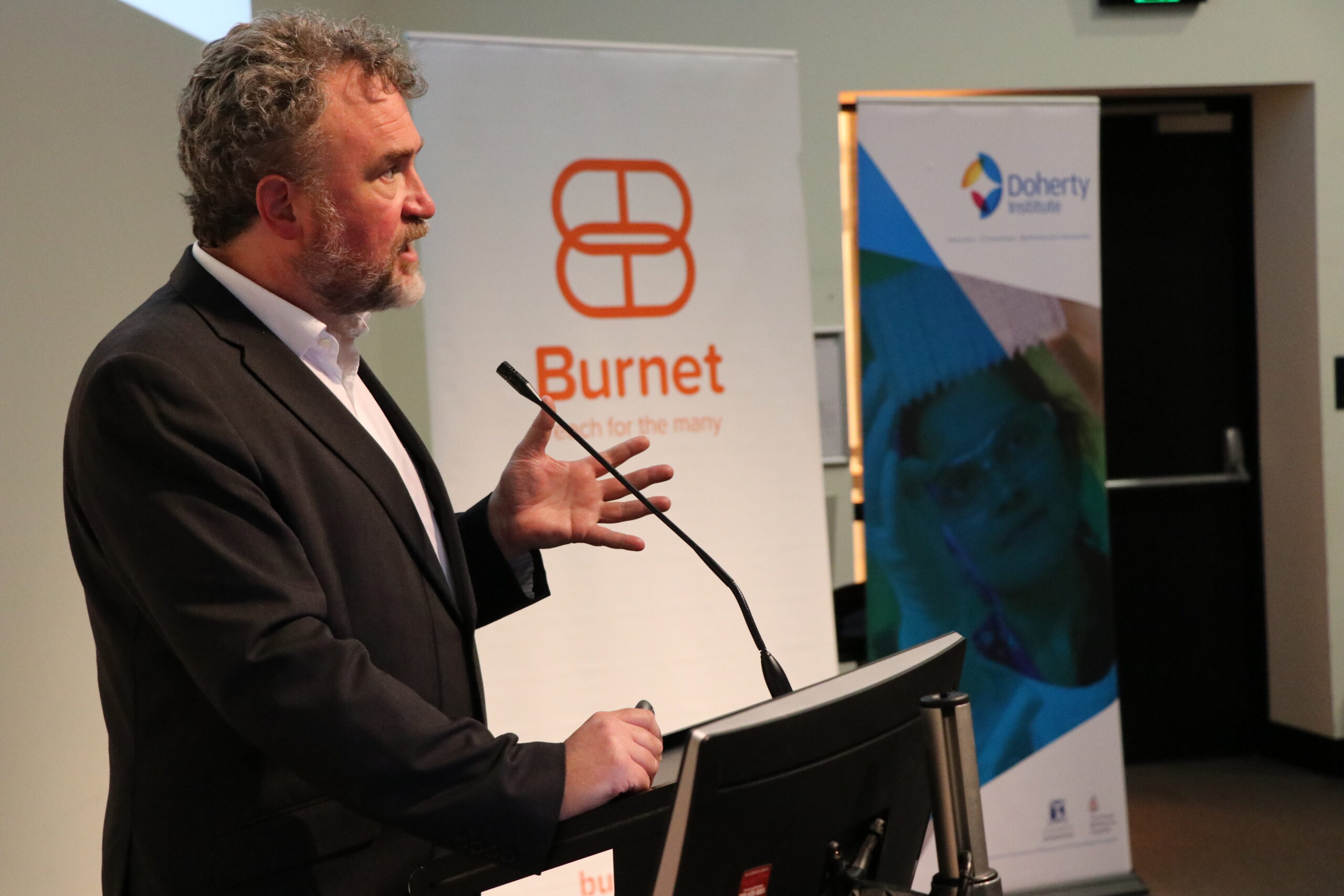In anticipation of the Burnet Institute’s relocation to its new home in the Australian Institute for Infectious Disease (AIID) alongside the Doherty Institute, the two institutes have been organising a series of joint events to spotlight the capabilities, the synergies and collaborations between the two organisations.
The recent Burnet/Doherty Public Health Symposium provided a platform for researchers and scientists from both institutes to present some of their work in public health and share insights. The event highlighted the real impact that both organisations have on protecting and improving the health of people and communities, in Australia and internationally, in three key areas of public health research, as summarised in this article.
The Royal Melbourne Hospital’s Associate Professor Deb Friedman, Director of VICNISS at the Doherty Institute and Professor Mark Stoové, Head of Public Health at Burnet Institute, outlined the impact of infection surveillance and control programs in reducing the rates of infectious diseases.
VICNISS observed he significant decrease in surgical site infections in Victoria, demonstrating the effectiveness of surveillance efforts and the importance of sharing data from surveillance programs. ACCESS, a monitoring program for sexually transmissible infections and blood-borne viruses, led by Burnet and Kirby Institutes, provided crucial data for informing public health policy and, in turn, improving health outcomes.
Associate Professor Nick Scott, Head of Modelling and Biostatistics at the Burnet Institute, presented results from the team’s optimal funding allocation modelling aimed at maximising HIV program impact in Eastern Europe and Central Asia, offering a powerful example of how modelling can effectively inform large-scale public health interventions.
The Royal Melbourne Hospital’s Dr Katherine Gibney, infectious diseases physician, public health physician and medical epidemiologist at the Doherty Institute, highlighted the pivotal role of disease epidemiology data in creating the first-ever computer modelling program predicting locations and times of increased transmission risk of Buruli ulcer in Victoria. This statistical tool could inform the design and delivery of targeted public health interventions to prevent human cases in Victoria.
The Royal Melbourne Hospital’s Professor Ben Cowie, Director of the WHO Collaborating Centre for Viral Hepatitis at the Doherty Institute, presented HepLOGIC, a GP software-embedded tool aiming to improve the identification and care of individuals at risk of liver cancer by using data from general practice records. In particular, he spoke to the design and implementation aspect of the program with a focus on increasing usability for GPs.
The VOICE initiative, highlighted by Amy Kirwan, a Senior Research Fellow at the Burnet Institute, emphasises the need for co-design and active participation in planning and implementation processes to address health inequities and improve outcomes for multicultural communities.
Image at right: Prof Ben Cowie presents at the symposium.
